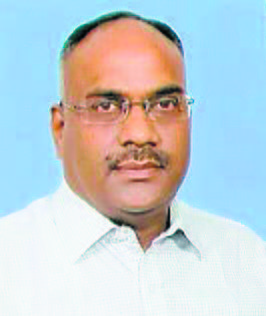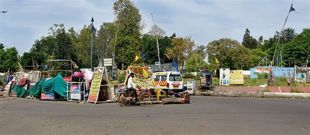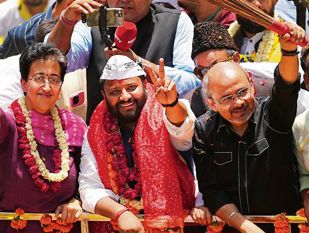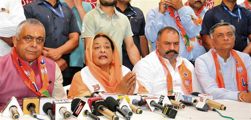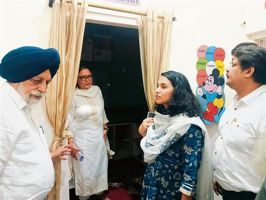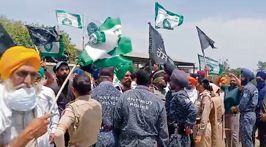
ANGER: The Nagaland tragedy has triggered a renewed clamour for the repeal of the draconian AFSPA. PTI
MP NATHANAEL
Former IGP, CRPF
THE killing of 14 civilians in Nagaland last week could have been avoided by exercising extreme caution. According to Army sources, a counter-insurgency operation was launched between Oting and Tiru villages in Mon district on the basis of “credible intelligence of the likely movement of insurgents”. While most news reports state that the ambush by the special forces of the Army was laid late in the evening or night, some have reported that the incident took place around 5 pm. They were lying in wait for insurgents of the National Socialist Council of Nagaland (Khaplang-Yung Aung) — the NSCN (K-YA).
In this part of the country, the sun sets early and the region is soon enveloped in a blanket of darkness. When the truck carrying the coal mine workers from Tiru was returning to Oting, the Army commandos mistook them to be insurgents and fired at them when they did not stop on being challenged. It being dark, they may have not been able to clearly see and identify the occupants of the truck and, hence, resorted to firing when they drove on.
Any security professional will opine that mere “credible” information does not give the licence to kill without ascertaining whether those trapped in their ambush are insurgents for sure. With night vision devices available these days for carrying out operations in the dark, they could have identified the occupants of the vehicle from a distance and made sure that they were insurgents before firing at them.
Going by the reports, the Army personnel bungled there, leading to the tragic incident. To say that there has been an intelligence failure would be too premature. The possibility of the insurgents having approached the area subsequently and then taken a detour after getting to know of the incident cannot be ruled out.
During the years when terrorism had engulfed Punjab, the Central Reserve Police Force, along with the Punjab Police, carried out “night domination” operations across the state to curb the movement of terrorists at night by laying ambushes on their probable routes. It was with the extensive use of night vision devices that the terrorists were identified from a distance and challenged on nearing the ambush points.
The faction of the NSCN (K-YA), led by its leader Yung Aung, has been active in the area and is known to kidnap villagers for ransom and release them later. After the death of Shangwang Shangyung Khaplang in June 2017, Khango Konyak took over the reins of the NSCN (K) faction. Khango Konyak was, until a few years back, considered a powerful leader not just of the NSCN (K) after Khaplang’s death but also of the United National Liberation Front of Western South East Asia — a conglomerate of 11 militant outfits of the north-eastern region, which included the United Liberation Front of Assam (Independent) of Paresh Barua and the United National Liberation Front of Manipur. Khango Konyak has since joined the peace process.
Yung Aung, a nephew of Khaplang, ousted Khango Konyak by “impeachment” and donned the mantle of the leadership of the NSCN (K-YA). When differences between him and Niki Sumi of the Sema tribe from Zunebhoto cropped up, the latter formed his own outfit, known as the NSCN (K-Niki) faction. The faction led by Niki Sumi entered into a ceasefire agreement last year and nearly 200 of its members surrendered. Niki Sumi was the mastermind behind the ambush of Army personnel in June 2015 in Chandel and carried a reward of Rs 10 lakh on his head.
The Yung Aung faction is the only Naga outfit that is not a signatory to the peace talks with the government. Among its cadres of about 350, just 60 are Konyaks and Wanchos while the rest have their roots in Myanmar. He is gradually losing hold in the area of Mon, which has been supporting him. The day may not be far when he, too, would call for ceasefire. To hasten his surrender, the pressure will have to be mounted on his faction.
What, however, is intriguing is the inordinate delay in the Naga peace talks which have been hanging fire for over six years after the Framework Agreement was signed between the NSCN (Isaac-Muivah) outfit and the government. With much fanfare, the Framework Agreement was announced in the presence of Prime Minister Narendra Modi and the Naga leaders in August 2015.
The bitterness that cropped up between the then interlocutor and the present Governor of Tamil Nadu, N Ravi, has stalled the peace process. The NSCN (IM) has not taken kindly to his choosing to hold talks with the Naga national political groups comprising seven Naga outfits separately.
Some of the views that he expressed openly as the Governor of Nagaland led to his alienation from the denizens of Nagaland. The present interlocutor, AK Mishra, a retired Special Director of the Intelligence Bureau, has a tough task ahead.
While the NSCN(IM) has rescinded from its earlier demand for a Greater Nagalim, encompassing parts of Assam, Manipur and Arunachal Pradesh, it has stuck to its guns for a separate constitution and a flag under its special status accorded by Article 371 (A) of the Indian Constitution.
What makes the Centre’s task difficult is the fact that it cannot easily accede to this demand after divesting Jammu and Kashmir of its special status by the abrogation of Article 370.
After the Mon incident, there is a renewed clamour for the repeal of the draconian Armed Forces Special Powers Act (AFSPA), which has been in force in the state since 1958. Large-scale protests and even a 16-year-long hunger strike by Irom Chanu Sharmila in Manipur for the repeal of the law have not moved the governments over the past several decades.
Notwithstanding the fact that terror-related deaths of civilians have risen to 20 till November 15 this year as compared to two last year and the martyrdom of eight security personnel this year as compared to five last year, it can be safely surmised that the situation in the North-East has shown a vast improvement in recent years, what with the series of surrender by various insurgent groups in recent years.
Revoking the AFSPA now will assuage the tempers in the region.
Join Whatsapp Channel of The Tribune for latest updates.






